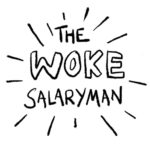Hey Anon, great question! First and foremost, we need to understand why Stashaway and Syfe are more popular as compared to the other robo-advisors, and it's namely because of the (1) low barrier to entry, (2) extensive marketing efforts and (3) most users are new to investing. Both Stashaway and Syfe doesn't require a minimum deposit, plus they support fractional shares which means you can buy 0.xxxxx units of an ETF. Also, their marketing efforts are pretty extensive, i.e. I always see Stashaway's ads on Youtube and Syfe's ads on Facebook - but definitely much better than seeing another ad which asks for 35 seconds of my time. And of course, they have constructed a portfolio for different risk index so all you have to do is just to select an appropriate risk index, deposit funds into the account and you're good to go!
In my opinion, the following reasons are possibly why Kristal.AI isn't as popular.
1) Doesn't support fractional units
Kristal.AI doesn't support fractional shares which means that you will need to buy the whole unit of the ETF and it can be pretty expensive, depending on the price of the ETF. For instance, if you're looking at QQQ, the current price for 1 unit is already 290.11 USD, whereas if you use Syfe's Equity 100 portfolio, you can purchase less than 1 unit even if you have less than 290 USD dollars. At the same time, this can also be seen as a "pro"/advantage since there is clear ownership, i.e. the particular unit of ETF belongs to you.
2) Need to self-select ETFs
Other robo-advisors such as Stashaway, Syfe, and AutoWealth starts the onboarding process with a questionnaire where you'll be asked to key in some data, such as income ability, investment experience, psychology mindset etc. and it will then recommend a portfolio with an appropriate risk index for you. Basically, the portfolios are already constructed so you just have to select which one you'd like to go with. In comparison, for Kristal.AI, you'll have to go through the list of ETFs available on their platform and decide which one you would like to purchase, i.e. construct your own portfolio.
On a side note, I just did a quick search and found that they do offer managed portfolios as well but I don't recall seeing it last time when I first heard of Kristal.AI.
3) Less intensive marketing efforts
Till date, I don't think I've ever seen a Kristal.AI ad on any social media platform nor through word-of-mouth.
Overall, I can't comment much since I've not used their platform to purchase ETFs, except for creating an account to get the signup promo and withdrawing it thereafter LOL. So do check out their reviews on Seedly for a more accurate review - https://seedly.sg/reviews/robo-advisors/kristal-ai
Caveat: For the free management fees, it only applies to either your first $50k USD or the first 25 trades in a calendar year. If you exceed the 25 trades in a year, the management fee kicks in.













Hey Anon, great question! First and foremost, we need to understand why Stashaway and Syfe are more popular as compared to the other robo-advisors, and it's namely because of the (1) low barrier to entry, (2) extensive marketing efforts and (3) most users are new to investing. Both Stashaway and Syfe doesn't require a minimum deposit, plus they support fractional shares which means you can buy 0.xxxxx units of an ETF. Also, their marketing efforts are pretty extensive, i.e. I always see Stashaway's ads on Youtube and Syfe's ads on Facebook - but definitely much better than seeing another ad which asks for 35 seconds of my time. And of course, they have constructed a portfolio for different risk index so all you have to do is just to select an appropriate risk index, deposit funds into the account and you're good to go!
In my opinion, the following reasons are possibly why Kristal.AI isn't as popular.
1) Doesn't support fractional units
Kristal.AI doesn't support fractional shares which means that you will need to buy the whole unit of the ETF and it can be pretty expensive, depending on the price of the ETF. For instance, if you're looking at QQQ, the current price for 1 unit is already 290.11 USD, whereas if you use Syfe's Equity 100 portfolio, you can purchase less than 1 unit even if you have less than 290 USD dollars. At the same time, this can also be seen as a "pro"/advantage since there is clear ownership, i.e. the particular unit of ETF belongs to you.
2) Need to self-select ETFs
Other robo-advisors such as Stashaway, Syfe, and AutoWealth starts the onboarding process with a questionnaire where you'll be asked to key in some data, such as income ability, investment experience, psychology mindset etc. and it will then recommend a portfolio with an appropriate risk index for you. Basically, the portfolios are already constructed so you just have to select which one you'd like to go with. In comparison, for Kristal.AI, you'll have to go through the list of ETFs available on their platform and decide which one you would like to purchase, i.e. construct your own portfolio.
On a side note, I just did a quick search and found that they do offer managed portfolios as well but I don't recall seeing it last time when I first heard of Kristal.AI.
3) Less intensive marketing efforts
Till date, I don't think I've ever seen a Kristal.AI ad on any social media platform nor through word-of-mouth.
Overall, I can't comment much since I've not used their platform to purchase ETFs, except for creating an account to get the signup promo and withdrawing it thereafter LOL. So do check out their reviews on Seedly for a more accurate review - https://seedly.sg/reviews/robo-advisors/kristal-ai
Caveat: For the free management fees, it only applies to either your first $50k USD or the first 25 trades in a calendar year. If you exceed the 25 trades in a year, the management fee kicks in.